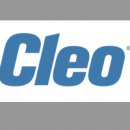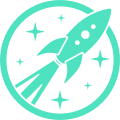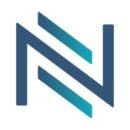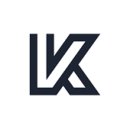In September 2016, one of the fiercest debates of our generation was sparked by an unassuming tweet beseeching the internet to “name a more iconic duo.”
The now-transcendent meme featured an image of Kendall and Kylie Jenner of Kardashian fame, back to back in moody black outfits, smizing with smokey eyes and daring the internet to answer. “I’ll wait,” the now-anonymous author of the tweet taunted. Of course, as legend has it, the internet answered in force: Rhapsodies of Calvin and Hobbes, Snoop Dogg and Martha Stewart, and Beyonce and Jay-Z rang out across the world wide web.
Savvy anthropologists might add another iconic duo to the record: product managers and engineers.
As tech leaders well know, the relationship between product managers and engineers is the lifeblood of any great product — but the synchronization of the two cohorts requires far more effort than the sisterhood of two lay internet starlets might call for.
The symbiosis between PM and engineer requires intentional planning and mutual effort, and it’s up to shrewd product managers to cultivate empathy, trust and open communication and keep innovation flowing between teams. Built In Chicago connected with seven product managers from some of Chicagoland’s brightest tech companies to find out where the two roles intersect, how they include engineers in the conversation, and what makes this indispensable pairing so iconic in the product world.
Foxtrot aims to redefine convenience for the modern consumer by marrying the best of neighborhood retail with e-commerce to create a community of discovery. Its spaces offer aspects of neighborhood cafes, and the Foxtrot App features pick-up and delivery options.
Buchi Okafor, senior product manager of e-commerce, connects with engineers on his team with an empathy-first approach. “As a PM, you’re constantly being told to empathize with your customers and stakeholders outside the product and tech organization,” he said. “But, I would argue that having empathy for your engineers is equally, if not more, important.”
As a product manager, what are the key ingredients for a successful relationship with your engineering team?
Showing empathy and providing the proper context as to why we’re asking them to build a particular feature.
Empathy can come in many forms. I made it a point to meet with all of the engineers on my squad when I first joined the team to truly get an understanding of who they are, what drives them, and find commonalities we can bond on that are not work-related. This foundation allows us to deliver more impact faster by streamlining our collaboration.
During my time as a PM, I found success working with engineers when they understood the “why” of a feature.
What customer problem does it solve? What KPIs will it drive? How does this stack up against other features in the backlog? These are all questions I make sure I provide the answers to before kicking off features with the engineering team so they know the impact of their work.
Describe how your product and engineering teams intersect.
Our product and engineering teams are split into two squads, with a dedicated team of engineers, designers and a PM working towards launching features that drive our respective KPIs. Given that our squads are relatively small, we can work very closely together through daily standups, team check-ins, and various milestone meetings during our sprint cycles.
During my time as a PM, I found success working with engineers when they understood the ‘why’ of a feature.”
What communication strategies do you use to ensure engineers share your product vision?
Bringing engineering into the product development process early is one of the ways that really help us communicate our product vision. Ahead of each quarter, we go through a prioritization exercise to determine what features we want to build. We make it a point to involve engineering during this time so they also have a stake in the game and can provide their input.
Cleo is an ecosystem integration software company focused on business outcomes. It aims to deliver solutions that make it easy for customers to discover and create value through the movement and integration of B2B enterprise data.
Vidya Chadaga, vice president of products, has found that engineers work best when they delve into the meaning of the product they’re working on. “Luckily for us, our engineers love to hear about the context and background behind why something is being built and the direction the product is headed,” Chadaga told Built In Chicago. “They feel strongly about not only wanting this from the product managers but believe that they need it in order to build great products.”
As a product manager, what are the key ingredients for a successful relationship with your engineering team?
In a software company, there’s probably no dynamic more critical to delivering successful products than the relationship between product management and engineering. At Cleo, this bond is filled with empathy and care.
It is a cyclical process of listening to the market, driving agile product innovation and course-correcting. We honor this dynamic in a variety of important ways, as part of our day-to-day operations.
For instance, we keep engineering abreast of product vision and product direction. Customer needs and market opportunities are shifting all the time. This means product management and engineering both have to be open to shifting their priorities in response to new requests. By sharing what we’re seeing with engineering, any changes to work commitments can happen quickly, easily and naturally.
Communication is always vital, so we built a two-way feedback loop to allow for open, global, constant communication.
Finally, transparency is essential to explain the business reasons and expectations to engineering. In return, PMs get empathy and support from their engineering counterparts.
Describe how your product and engineering teams intersect.
No company I’ve ever heard of does it the way Cleo does it, and our approach makes for exceptional working relationships. We use a three-level concept called “circles, squares and triangles.”
Circles represent the org leaders — namely our head of products who runs product strategy, product management and product marketing, the head of product development who runs engineering and user experience, and the head of technology who runs product architecture. All sit equally at a “roundtable” and make key decisions together.
Squares represent the next level of leadership in each of these three departments. Each corner of the square is taken by product management, user experience, engineering and architecture. Again, every critical function has an equal voice, and decisions are made together.
Triangles represent the squad owners who own a specific product-related mission. Each of their squads is comprised of team members representing contributing areas — like product managers, software engineers, test engineers, UI developers, back-end engineers and beyond. With this model, our research, planning, strategy and execution are crisp and effective.
There’s probably no dynamic more critical to delivering successful products than the relationship between product management and engineering.”
What communication strategies do you use to ensure engineers share your product vision?
At Cleo, the product organization passionately believes that the “why” behind our product vision is just as important as the “what” the product vision is.
Beyond the “why” and the “what,” we also cover the “who” — who is the set of engineers that build the capability as well as who owns the tasks to deliver on it; the “when,” which means all-important deadlines; and the “where,” which reflects where the work gets done.
BCG Digital Ventures is the corporate innovation and digital business-building arm of Boston Consulting Group. Its driving mission is to invent, build and scale industry-disrupting businesses.
In her work with engineers, Lead Product Manager Anne Jiao starts with outcomes. “Being focused on customer outcomes also helps you align with the engineering team — to find the common goal that mutually works towards the ultimate excitement of having the product in the hands of real customers,” she said.
As a product manager, what are the key ingredients for a successful relationship with your engineering team?
Collaboration, customer outcomes and communication. Collaboration means making sure that we are setting the right tools and processes for the team to interact effectively. It’s always surprising how a great meeting cadence can help drive better relationships.
Having a good communication style — whether it’s verbal, written or visual — to align the product vision is crucial to creating effective ownership across the team. As a bonus, it also helps to create trust with the engineering team.
Describe how your product and engineering teams intersect, and how this organizational structure helps build the relationship between the two.
In many ways, I usually see the product, engineering and design team as one flat organizational structure where one enables the other in that “yes and” fashion. Product and engineering intersect on many fronts — even at the beginning of product discovery.
It is helpful to have the engineers understand the problems that customers face and explore the root of the problem first-hand. In product definition, we work together to come up with impactful, feasible goals that will satisfy our stakeholders and our users.
In product-build, engineering and product intersect in the solutioning and pointing process. Post-build, we work together to QA and deploy a release. Post-launch, we think of ways to optimize the experience going forward. While there are many points of intersection, we must also provide just as much heads-down time for each of us to actually do the job of thinking deeply and producing the work.
Product and engineering intersect on many fronts — even at the beginning of product discovery.”
What communication strategies do you use to ensure engineers share your product vision?
Starting with a hypothesized data flow and customer journey has always been highly effective in aligning product vision with engineers. Whether this is on the whiteboard or products like Figma and Miro, it’s always helpful to make sure we walk through customer steps and data inputs and outputs.
Having the engineers engage this way helps us understand immediately that the flow is open to revision and that the full team contributes to the final solution. Conveniently, it also makes it easy to tell what the next steps are — including what we might want to research without making things too high-fidelity or written in stone from the start.
Fast Radius is driven by the belief that manufacturing is important not only for what it makes but for what it makes possible. Fast Radius aims to provide manufacturers with the technology and expertise they need through the entire production process.
Danielle Lopez, vice president of product, told Built In Chicago that trust — grounded in expertise — drives the relationship between product and engineering. “I find when a PM has a deeper technical understanding of a product, it strengthens this relationship,” she said. “It means the PM holistically understands the scope of any engineering changes and helps them communicate effectively with the team.”
As a product manager, what are the key ingredients for a successful relationship with your engineering team?
Establishing mutual trust and respect is vital. Engineers must trust the product manager has their back when it comes to delivery timelines and knows the PM will advocate for them with stakeholders. It’s also important for engineers to respect the PM as the subject matter expert for their domain.
Describe how your product and engineering teams intersect.
Our product, design and engineering teams work in self-contained squads, with all the resources they need to operate independently. This empowers them to move much more quickly. Each squad owns a product, has its own group of stakeholders and defines its own roadmap. We have tight collaboration across disciplines because we all share the same business goals, which we set quarterly as part of our OKR process.
We have tight collaboration across disciplines because we all share the same business goals.”
What communication strategies do you use to ensure engineers share your product vision?
We use different strategies at different levels in the business. For example, every month we hold a product, design and engineering all hands. In these larger sessions, we revisit the product vision, discuss OKRs and celebrate our progress.
At the squad level, product managers meet with their teams monthly to recap their work and look ahead at the features they’re building next. In these squad sessions, PMs explain the business problems we’re trying to solve. They share relevant data like customer interviews, jobs-to-be-done results and business metrics. PMs give clear rationale when something becomes a priority to make sure their engineers have all the context they need to tackle the problem successfully.
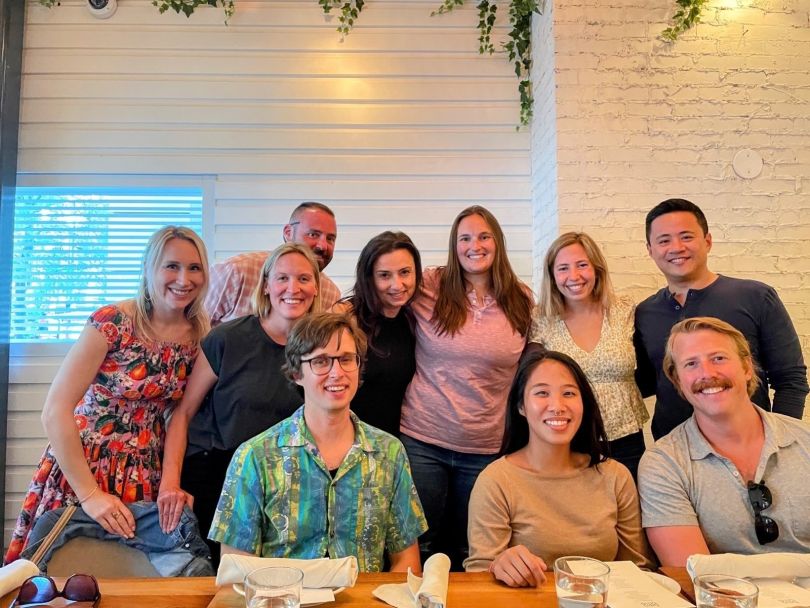
New Era ADR is a fully virtual mediation and arbitration platform that aims to resolve legal disputes in less than 100 days, save businesses and individuals time and expenses, and prevent gamesmanship in litigation. It also strives to provide a more accessible platform for all participants in the justice system.
Alexis Perlmutter, head of product, believes in repetition. “If you’re tired of telling the same stories, your partner teams are just beginning to understand your vision,” she told Built In Chicago. “Engineers can lose sight of the big picture when they’re bogged down in some gnarly code for a few sprints — check in with partners regularly to see if anything has changed in their world.”
As a product manager, what are the key ingredients for a successful relationship with your engineering team?
Trust and communication are critical in any relationship. To ensure everyone performs at their best, we emphasize a few best practices:
- Iterate openly. Everyone wants to feel included in the product decision-making process. We speak up when we have concerns and attribute ideas to the people who come up with them. I can cite multiple occasions where insight from engineering shaped our roadmap for the better.
- Prioritize velocity and impact. Product and engineering are kindred spirits, in that we want to build things that matter. We speak openly about what supports or distracts from our ability to see impact. We ask questions like: What would really move the needle for our users this quarter? Is there a simpler way to solve this problem? Can we streamline anything about our day to day such that we can get this into the hands of users faster?
- Celebrate failure. Every team I’ve been a part of has been trying to build something new. If the path to growth were easy and well-defined, we probably wouldn’t have jobs! If we never fail, we’re probably not thinking big enough.
Describe how your product and engineering teams intersect.
I always like to describe product as the translation layer between business and tech. Folks in sales and marketing — and our team of legal experts — know better than anyone what can sell in the market. Engineers know better than anyone what we can build and how costly it is to maintain various features at scale. Product sits in between, defining what we should build based on what we know about users, market and tech.
To that end, product and engineering are standalone functions at New Era — neither reports to the other. We find that this structure encourages a healthy tension between product and engineering — and clarifies our respective roles and responsibilities.
Product and engineering are kindred spirits, in that we want to build things that matter.”
What communication strategies do you use to ensure engineers share your product vision?
PMs cannot overcommunicate their vision. To ensure alignment, I like to tell stories. The best product leaders are exceptional storytellers. Roadmaps and testing plans will follow. But if you can’t build empathy for your users through a compelling narrative, you’ve missed the most important step in your product’s journey.
We also like to emphasize the importance of two-way communication. I proactively ask for feedback, making that conversation approachable by limiting it to one thing. We ask, “What’s one thing that our current vision doesn’t solve for our users, but might be important in the future?” or, “What’s one thing that can go very wrong if we move forward?” If the answers are wildly off from my vision, I know I have more work to do to get alignment.

SpotHero aims to transform the $30 billion parking industry. It is comprised of a dedicated team who shares the vision of defining the future of transportation in major cities.
Senior Product Manager Kate Owens has learned to include engineering in the conversation from day one. “Ultimately, the more the product team can involve engineering in the discovery process, the easier it is to speak a common language when it comes to solving a customer problem,” she said.
As a product manager, what are the key ingredients for a successful relationship with your engineering team?
As a product manager, my focus is on how we make the best product possible for our customers. Though I spend most of my time understanding customer needs and collaborating with stakeholders, I can’t turn ideas into action without my engineering partners.
Having mutual trust and empathy for the unique perspectives each other brings to the table is what creates the most successful engineering-product relationships. In order to create trust, I hold up my side of the equation as a product manager by having a “why” for every prioritization choice I make.
I bring engineers into the planning process as early as possible so that we can gain a mutual understanding of the problems we’re choosing to solve. Once we collectively decide on our focus, the next step to building trust is committing to doing the things we say we’re going to do.
Of course, there will be plenty of times when new learnings or business needs call for a pivot — but constantly changing course can be demoralizing to a team. I see it as my job to guard my engineering partners from any potential distractions and make sure that the work we do stays meaningful to our customers.
Having mutual trust and empathy for the unique perspectives each other brings to the table is what creates the most successful engineering-product relationships.”
Describe how your product and engineering teams intersect.
At SpotHero, product and engineering spend a lot of time together. We are broken into cross-functional squads — each with a product manager, engineering manager, product designer and engineers. As squads, we utilize agile ceremonies like daily stand-ups, bi-weekly retrospectives, sprint planning meetings, and monthly “Team Norms” discussions to help ensure constant and open communication.
We are purposeful about our communication tactics since we’re divided across different countries and time zones.
We routinely employ design workshops to dive deep into a customer opportunity and give an opportunity for everyone involved to work together to solve a problem. End-user interviews are conducted regularly to test early prototypes and/or gather new opportunities. It’s one thing to read a customer quote about your product and a whole other beast to hear it firsthand!
What communication strategies do you use to ensure engineers share your product vision?
When I first started out as a product manager, I was so focused on making a perfect strategy, roadmap and OKRs that I actually ended up working counter to my goals. What my team would see was a pretty slide deck finished just before the quarter started — without the full backstory of how it was created and with little to no time to pivot.
During the heads-down time that I was waiting to share my vision, my engineering partners felt they had no choice but to create their own individual goals and visions. The trickle-down effect resulted in conflicting commitments, unmet deadlines and low team camaraderie. Over time, I’ve learned to include engineering into the more messy parts of the process.
This is the time period where we’re sifting through all the different opportunities we could go after: talking to customers, aligning with stakeholders, exploring data and running experiments. The goal is that when I share any product vision, strategy or roadmap documents, where the ideas came from should never come as a complete surprise. By helping my engineering partners see where we’re going, it’s easier for them to prioritize, encouraging long-term alignment.
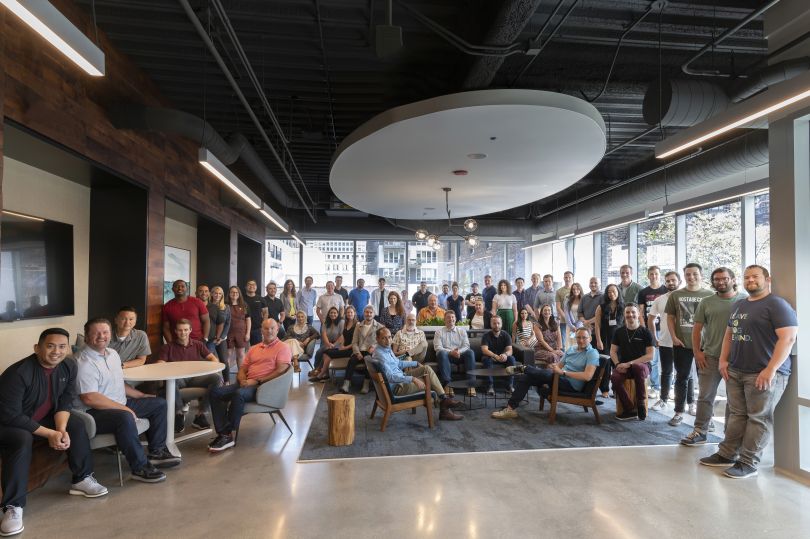
Kalderos strives to deliver technology that solves the challenges around drug discounts in the U.S. healthcare system. It collaborates with healthcare providers, drug manufacturers, payers and government agencies toward the goal of lowering the cost of healthcare.
Chris Hilger, group product manager, advocates for a sense of ownership among engineers. “The PM should be involved with understanding the pros and cons of a given architecture or solution, but engineers should feel a strong sense of ownership over the technical direction of the product area they are working on,” Hilger told Built In Chicago.
As a product manager, what are the key ingredients for a successful relationship with your engineering team?
No relationship is more important for a product manager than that between a PM and their engineering team. There are a few things I’ve found helpful in creating the space for that strong relationship. The first is one of Kalderos’ guiding principles: Share the “why” along with the “what.”
This stresses the importance of giving context to teammates so they feel empowered to carry work forward. Context can build shared understanding and preemptively remove roadblocks — while facilitating buy-in for more complex initiatives.
Another key ingredient for a PM is clearly articulating the business outcome so that engineers can drive the search for the right technical solution.
Describe how your product and engineering teams intersect.
We have configured our product and engineering teams so that they report to the same leader, our head of product, engineering, design and data management (PEDDM). Not only does this reporting structure allow for much better alignment and iteration speed, but it also facilitates strategic decision-making when it comes to hiring, product investments and other vital focus areas.
Context can build shared understanding and preemptively remove roadblocks — while facilitating buy-in for more complex initiatives.”
What communication strategies do you use to ensure engineers share your product vision?
As Kalderos has grown, we have been able to source the best engineering talent from across the country. With teams working in multiple time zones, we have learned to rely more and more on written documentation. We’re also experimenting with how recorded videos can play a larger role in sharing product updates.
We have adopted some key meetings on a two-week cadence that allow everyone on our teams to be on the same page. For example, we have reviews that give the product and engineering teams time to meet with senior leadership to jointly solve some of the biggest challenges facing the team.
We also showcase our Iteration in review every two weeks. This meeting is especially important, as it gives regular visibility into the great work and accomplishments of our engineering team to the entire company.






